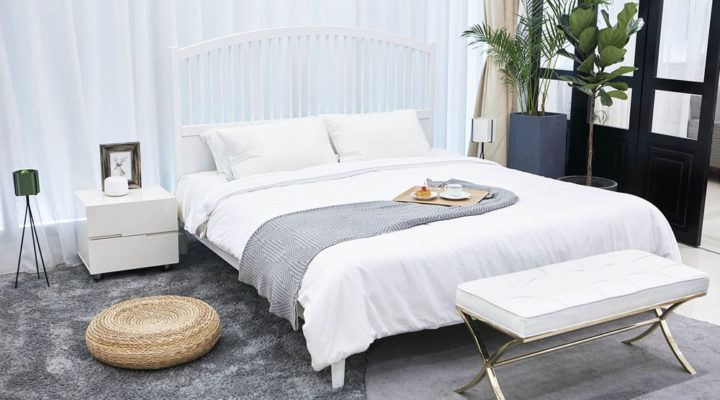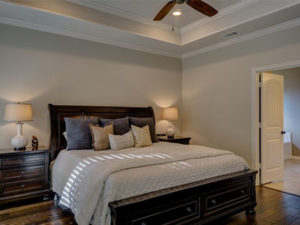
We spend one-third of our lives sleeping, and while that sounds awfully time-consuming, the truth is that that time is pretty useful, since sleeping restores our energy and helps us process all the information we’ve gathered during the day. Usually, we hear tips about the optimal amount of time we should spend sleeping, but we rarely speak about the quality of sleep which is equally important. There are many factors that can affect your sleep, and one of the essential ones is your sleeping environment. But don’t worry, you’ll get a good night’s rest every night, all you need to do is learn how to design a bedroom that is soothing and sleep-inducing.
Start with a paint job
Color psychology is much more than just a myth. Colors have a major impact on our mood, and while some, such as bright red, can make you anxious, others like light blue can cause peace and serenity. So, treat your bedroom with a new soothing shade of green, beige, lavender or blue. Just make sure you don’t use overly saturated shades to avoid the opposite effect.
Improve your lighting
 Lighting also plays a big role in how you feel inside your bedroom. Overly bright lights can cause eyestrain and make you agiler than you would want to be. An overhead light that’s not too bright will do the trick, but you should also have a reading lamp on your nightstand so that you don’t have to get up from bed when you start feeling sleepy.
Lighting also plays a big role in how you feel inside your bedroom. Overly bright lights can cause eyestrain and make you agiler than you would want to be. An overhead light that’s not too bright will do the trick, but you should also have a reading lamp on your nightstand so that you don’t have to get up from bed when you start feeling sleepy.
Make it easier to breathe
The question of how to design a bedroom for better sleep includes much more than mere appearances. Poor air quality may not have a tangible impact on your sleep, but in the long run, it can affect its quality. Because of that, it would be useful to get an air purifier to eliminate the toxins from the air. If the air in your room is too dry, a humidifier would also be a good idea.
Wake up more comfortably
Waking up well rested is a crucial element of a good night’s sleep, but you can’t achieve that if your alarm clock jars you awake every morning. That’s why you should consider getting an alarm clock that wakes you up gradually, by slowly increasing light, sound, and even scents.
Have a soft spot to land on
Another essential part of comfortable waking up is having something soft to step on to when getting out of bed. No one likes to land on a cold hard floor. Placing soft floor rugs on both sides of the bed can make that process easier and less of a shock.
Get a body-supporting mattress
We mustn’t forget the role of the very bed you are sleeping in, as well as the mattress and bedding you are using. The mattress needs to support your body shape so that you don’t end up waking up with sore neck and back pain. Also, it would be useful to get hypoallergenic and organic bedding that can improve your sleep, in the long run.
Go minimalistic
A cluttered bedroom can clutter your mind and thus affect your sleep. Make sure there are no clothes on the chair next to your bed (yeah, we know this seems too much) and no unnecessary items disrupting the natural flow of the room.
Make the temperature just right
If you want to sleep well, make sure that the room is neither too hot nor too cold.A temperature between 60º and 67º Fahrenheit will relax your body, and make your sleeping patterns more consistent.
Get rid of the buzzers and visual stimuli
Is your PC located in your bedroom? Bad choice. Even when it’s turned off it can produce buzzing that is almost silent, but it still affects your nerves. Make sure your bedroom is free of all electronics, or at least that all of them are plugged out when you go to bed.
Banish the (unpleasant) noise
Speaking of buzzing and other noises (e.g. traffic and loud neighbors), if you can’t beat them, try to neutralize them by getting a white noise machine that produces soothing and pleasant sounds that can induce sleep faster.
Sleeping is the foundation of normal functioning. This tipson how to design your bedroom will help you transform your room into a restful ambiance that will provide you with everything you need for a good night’s rest.
Leave a Reply